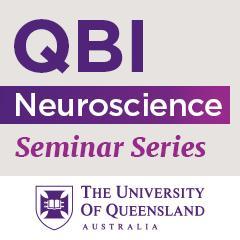What is the ultimate spatiotemporal resolution of human functional MRI? Insights into how brain vasculature influences hemodynamics
A/Professor Jonathan Polimeni
Richard M. Lucas Center for Imaging
Department of Radiology
Stanford University
USA
Title: What is the ultimate spatiotemporal resolution of human functional MRI? Insights into how brain vasculature influences hemodynamics
Abstract: All fMRI techniques in use today measure brain function only indirectly, by tracking the changes in blood flow, volume and oxygenation that accompany neuronal activity, and this has often been viewed as the fundamental limitation of the technique. However, recent evidence from invasive in-vivo microscopy studies has shown that the brain's smallest blood vessels respond far more precisely, in space and in time, to neuronal activity than previously believed. This insight suggests that the “biological resolution” of fMRI is intrinsically high, and, with sufficiently high imaging resolution, it should be possible to extract more meaningful neuronally specific information from fMRI—if we can understand how brain vascular anatomy and physiology shape the hemodynamics that generate the fMRI signals.
In this lecture, I will describe ongoing efforts to improve the neuronal specificity of fMRI and pose the question: How far can we go with fMRI? The limits of fMRI spatial and temporal resolution are actively being investigated using advanced imaging technologies. While high-resolution human fMRI studies are increasingly operating at the boundaries of what is achievable, a key challenge is that the vascular architecture of the brain reflects its structure and function across spatial scales. Both classic and modern vascular anatomy studies have shown how the macro-vascular geometry is coupled with the tissue geometry, including the gray matter folds and the white matter tracts, while the micro-vascular density closely follows borders of subcortical nuclei, cortical areas and cortical layers. I will present evidence that both the large- and small-scale vascular anatomy strongly influence patterns of fMRI activation and describe strategies for how to account for this.
As examples of the intrinsically high biological resolution of fMRI, I will present results showing cortical columnar and laminar imaging, and new directions in the emerging field of ”fast fMRI” that show how the BOLD response can track surprisingly fast neural dynamics. Lastly, I will share our recent progress towards building bottom-up biophysical models of the fMRI signals based on realistic vascular anatomy and dynamics that provide insights into the interrelationship between hemodynamics and neural activity. Overall, many lessons can be learned through a deeper understanding of brain vascular anatomy and physiology, which can both shed light on the brain's functional organization and help neuroscientists more accurately interpret the fMRI signals in terms of the underlying neural activity.
About Neuroscience Seminars
Neuroscience seminars at the QBI play a major role in the advancement of neuroscience in the Asia-Pacific region. The primary goal of these seminars is to promote excellence in neuroscience through the exchange of ideas, establishing new collaborations and augmenting partnerships already in place.
Seminars in the QBI Auditorium on Level 7 are held on Wednesdays at 12-1pm, which are sometimes simulcast on Zoom (with approval from the speaker). We also occassionally hold seminars from international speakers via Zoom. The days and times of these seminars will vary depending on the time zone of the speaker. Please see each seminar listed below for details.



